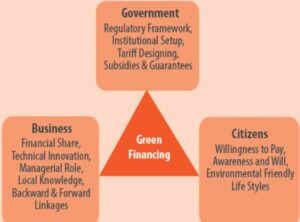CashNews.co

India’s ambitious energy transition faces a major bottleneck: the staggering Rs 4.25 trillion investment needed to upgrade its transmission network.
Green finance for energy transition: India is undergoing a sweeping energy transition aimed at replacing fossil fuel use with renewable energy. However, to achieve this, the country must first secure an investment of Rs 4.25 trillion to build the necessary power transmission infrastructure. This investment is crucial to meet an expected power demand of 277 gigawatts by 2027, as projected by the latest National Electricity Plan on transmission, released by the Central Electricity Authority, the technical arm of the ministry of power.
The National Electricity Plan covers two key areas — generation and transmission — and provides a roadmap for power infrastructure development to ensure a smooth transition to renewable energy.
READ | Dialogue to diplomacy: QUAD is shaping the emerging global order
The funding challenge
India’s clean energy transition faces significant challenges, with the biggest obstacle being access to affordable financing and finding institutions capable of deploying that financing effectively. During the G20 summit in India last year, the question of how to fund the necessary actions to transition economies toward green energy and combat climate change was a major topic of discussion. India also called for accountability from wealthier nations on their overdue promise to deliver $100 billion in annual climate finance to vulnerable countries.

India itself needs trillions of dollars to fund its climate plans, which include boosting renewable energy capacity and reducing emissions to reach net-zero by 2070. However, the current flows of green finance are only about a quarter of what is required to meet these ambitious goals.
Estimating the financial need
To secure the required funds, it is essential to first estimate how much India actually needs. To meet its target of increasing clean power capacity to 500 GW by 2030 and sourcing half of its energy needs from renewables, the country will need approximately $10.1 trillion in investment, according to the Council on Energy, Environment, and Water. Although the government has not yet published an official assessment of how much funding is needed to meet these goals, the Reserve Bank of India has indicated that India should aim to deploy green financing equivalent to at least 2.5% of GDP annually until 2030.
Moreover, the RBI estimates that India will need between $7.2 trillion and $12.1 trillion in new investments by 2050. Accelerating the energy transition could significantly increase these financial requirements.
Boosting green finance
India has limited domestic sources of climate finance, but there are vast global resources available that remain untapped. The Glasgow Financial Alliance for Net Zero (GFANZ), a leading coalition of financial institutions committed to achieving net-zero emissions, controls a pool of $130 trillion that could be directed toward global climate action. However, India needs a clear framework to attract such investments and define its specific financing needs.
One critical step is for India to establish a green taxonomy—a classification system that defines what can be considered environmentally sustainable investments. Similar systems have been adopted by the European Union, China, and Malaysia. A green taxonomy would enable India to measure and monitor the flow of green investments. The Indian Finance Ministry began working on recommendations for a green taxonomy in 2020, submitting them in 2022, but the government has yet to publicly release these guidelines.
With a green taxonomy in place, India could also make use of tools like “priority sector lending” to direct bank loans towards green projects, particularly in underserved sectors, to ensure adequate and timely financing. The RBI and Finance Ministry could draw inspiration from ASEAN’s layered green taxonomy, which is a continuously updated document reflecting sectoral perspectives on sustainability pathways.
Leveraging public and private finance
The government must allocate more public funds to green initiatives in order to leverage private investment through blended finance. Establishing a green financial institution or bank could further help mobilise both domestic and international funding for green projects.
India’s power transmission system is undergoing significant expansion to accommodate the rising demand for electricity and the growing share of renewable energy in the energy mix. While the government has a primary responsibility to gather these funds, diplomatic efforts and global forums must also pressure high-income countries to significantly increase their climate finance contributions. This would support emission reduction efforts in developing nations, in line with the principle of fair responsibility in climate action.
Achieving India’s ambitious energy transition targets, particularly in lower-income regions, is not just a domestic challenge—it is a global responsibility. High-income nations must play their part by fulfilling their financial commitments, recognising that supporting energy transitions in developing countries is crucial for global climate goals.

